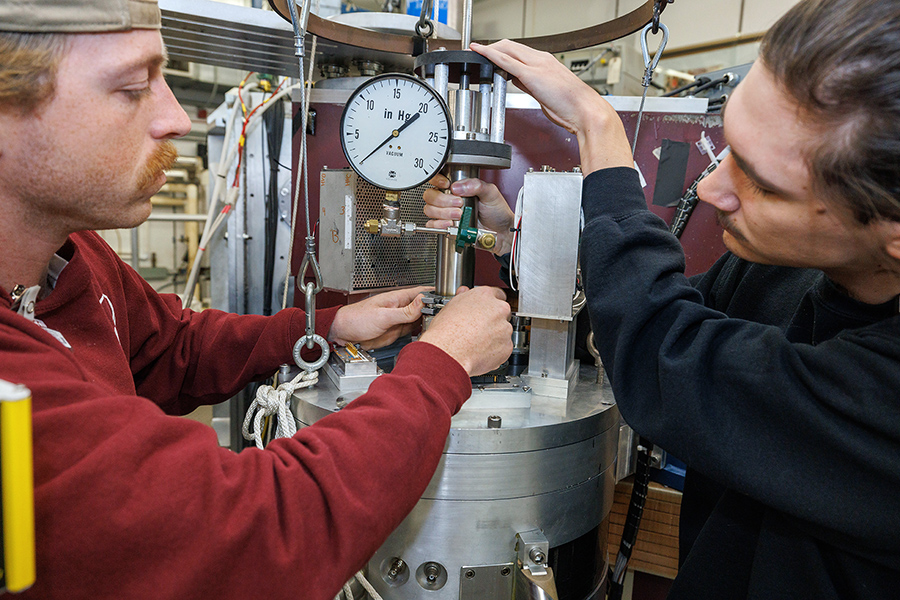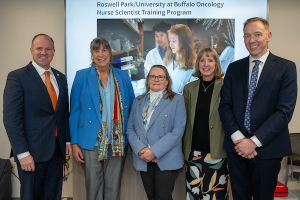The far-reaching Rubin EPO program capitalizes on new technologies and strategies to reach a whole new audience of science-interested teens and adults who might not already be engaged with or highly knowledgeable about astronomy and astrophysics. The entire program is online, and anyone with an internet connection can access the whole range of materials developed by the Rubin EPO team. Because so many people are now using phones or tablets to access the internet, the Rubin program has been optimized for mobile devices. Materials are available in English and Spanish, to welcome a Chilean audience as well as Spanish speakers in the US and around the world.
Rubin’s EPO program is the first astronomy/astrophysics outreach program to be fully funded by the National Science Foundation (NSF) for creation during a project’s construction phase, and it was developed along with the rest of the observatory system. The construction and operations of Rubin Observatory and the US Department of Energy (DOE) LSST Camera is a US federal partnership of the NSF and DOE, with private and international contributors. The observatory itself is still under construction, but development of the EPO program finished ahead of schedule and under budget, concluding with a final acceptance review by NSF in December 2022.
“The program built by Rubin Observatory’s EPO team is exciting and unique—there’s nothing else like it out there. It’s an opportunity for teachers and the public to interact with science data in a whole new way,” notes Elizabeth Pentecost, Project Management Administrator at NSF.
A pillar of the Rubin EPO program is its formal education component, which focuses on engaging advanced middle-school to introductory college students with real telescope data. The program centers around a series of investigations and a full complement of teacher support materials. Investigations are engaging and interactive and don’t require special software or for teachers to download data—they just need a browser. Best of all, they’re free for anyone to use. Rubin’s formal education team has also started offering professional development workshops to introduce teachers in the US and Chile to the investigations and connect them with the Rubin Observatory community.
The Rubin EPO program also offers a range of products for the general public, including a website, animated videos in English and Spanish, an image gallery, and a browser-based game called Space Surveyors. The game teaches players how a survey telescope works as they attempt to capture images of stars, galaxies, and moving objects in the night sky—just as Rubin Observatory will when it begins operating in late 2024.
Victor Krabbendam, Project Manager for Rubin Construction, says, “The EPO team has produced a high quality and engaging program. I am pleased to see it launched even before the observatory is operational. This is a great opportunity to invite the public to engage with Rubin Observatory and learn why it’s a unique scientific and technological achievement.”
Additional education and outreach products will be released once data is flowing from the observatory. These include the Skyviewer, an all-sky visualization tool; and the Orbitviewer, a Solar System visualization tool. Both will offer users a choice of guided or free-form interactions with Rubin Observatory’s observations and discoveries. In partnership with Zooniverse, a popular citizen science platform, Rubin will also offer scientists an easy, browser-based tool to create projects and populate them with Rubin data. That’s great news for scientists who need the help of lots of human eyes to interpret their data, and for anyone with any level of experience—or none at all—who wants to contribute to real, cutting-edge science.
Rubin Observatory invites you to get started now by visiting our new website at rubinobservatory.org or following us on social media.
About Rubin Observatory:
Vera C. Rubin Observatory is currently under construction on top of Cerro Pachón, a mountain in Northern Chile. Rubin Observatory will conduct a ten-year survey of the Southern Hemisphere sky (referred to as the Legacy Survey of Space and Time, or LSST) with the goal of answering some of scientists’ biggest questions about the Universe. Every night for a decade, Rubin Observatory will take images of the sky using a 3200 megapixel camera and six different optical filters. Each image covers an area as big as 40 full moons, and the 8.4-meter telescope can move between different positions in less than five seconds. In this way, the telescope will image the entire visible sky every 3-4 nights. This makes Rubin Observatory particularly good at detecting objects that have changed in brightness, like supernovae, or in position, like asteroids. Additionally, Rubin Observatory’s light-collecting power and sensitivity will help us discover about 20 billion galaxies and a similar number of stars.
Vera C. Rubin Observatory is a Federal project jointly funded by the National Science Foundation (NSF) and the Department of Energy (DOE) Office of Science, with early construction funding received from private donations through the LSST Corporation. The NSF-funded Rubin Observatory Project Office for construction was established as an operating center under the management of the Association of Universities for Research in Astronomy (AURA). The DOE-funded effort to build the Rubin Observatory LSST Camera (LSSTCam) is managed by SLAC National Accelerator Laboratory (SLAC).
The National Science Foundation (NSF) is an independent federal agency created by Congress in 1950 to promote the progress of science. NSF supports basic research and people to create knowledge that transforms the future.
NSF and DOE will continue to support Rubin Observatory in its Operations phase via NSF’s NOIRLab and DOE’s SLAC.




